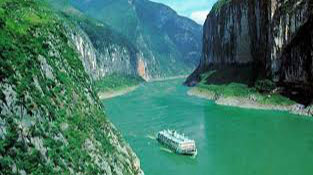The Yellow River is the mother river of China. It is about 5,464 kilometers long and has a basin of 750,000 square kilometers. It originates from the Bayan Har Mountains on the Qinghai-Tibet Plateau, flows through nine provinces and regions, and finally empties into the Bohai Sea. The Yellow River is not only the second longest river in China, but also the cradle of the Chinese nation and splendid civilization. However, because it flows through the deserts and the Loess Plateau, the river is also known for being “easy to silt, easy to burst, and easy to migrate”. It has flooded many times and caused casualties and severe damages in history. Today, through comprehensive management, the Yellow River floods have been effectively controlled and have become an important source of agricultural irrigation water. The banks of the Yellow River are green and full of vitality. As Xi said, “Green waters and green mountains are gold and silver mountains”.
Yellow River has the following cities along the river as well as its tributaries:
- Xining (Qinghai Province): Ancient name Qingtang City, it is the site of the Tibetan Buddhist holy site Taer Monastery, an ancient plateau city.
- Lanzhou (Gansu Province): The capital of Gansu Province, famous for Baita Mountain and the Yellow River Iron Bridge. Its beef noodles are also well-known throughout the country.
- Yinchuan (Ningxia Hui Autonomous Region): The capital of Ningxia Hui Autonomous Region, the center of Saishang Jiangnan, and the ruins of the ancient capital of Western Xia.
- Hohhot (Inner Mongolia Autonomous Region): The capital of Inner Mongolia Autonomous Region, an oasis city with merging of the grassland culture and Han culture.
- Baotou (Inner Mongolia Autonomous Region): An important industrial city especially famous for its steel and rare earth industries. It is also a grassland steel city.
- Ordos (Inner Mongolia Autonomous Region): An energy city that has risen rapidly because of its rich coal and natural gas. It also has a sheep cattle industry producing famous cashmere wool.
- Yulin (Wudinghe, Shaanxi Province): An energy city famous for its rich coal, oil, natural gas, and salt mines.
- Taiyuan (Shanxi): The capital of Shanxi Province with a long history. It has plenty of coal resources. It is also one of the birthplaces of Shanxi merchant culture.
- Linfen (Shanxi): Pingyang, the capital of Yao. It has a long history. It is also close to the famous Hukou Waterfall on Yellow River.
- Xian (Weihe River, Shaanxi Province): It was called Changan in ancient times. It is the ancient capital of 13 dynasties, an important birthplace of Chinese civilization, and the site of the Terracotta Warriors.
- Luoyang (Henan Province): The ancient capital of 13 dynasties. It is the city of peonies and next to the world cultural heritage site Longmen Grottoes.
- Zhengzhou (Henan Province): The capital of Henan Province. It is an important transportation hub. It is also the location of the ruins of the early capital of the Shang Dynasty.
- Tai’an (Dawen River, Shandong Province): At the foot of Mount Tai, it is the location of the world cultural and natural dual heritage.
- Jinan (Shandong Province): The capital of Shandong Province. It is famous for its many springs, and is also known as the “Spring City”.




